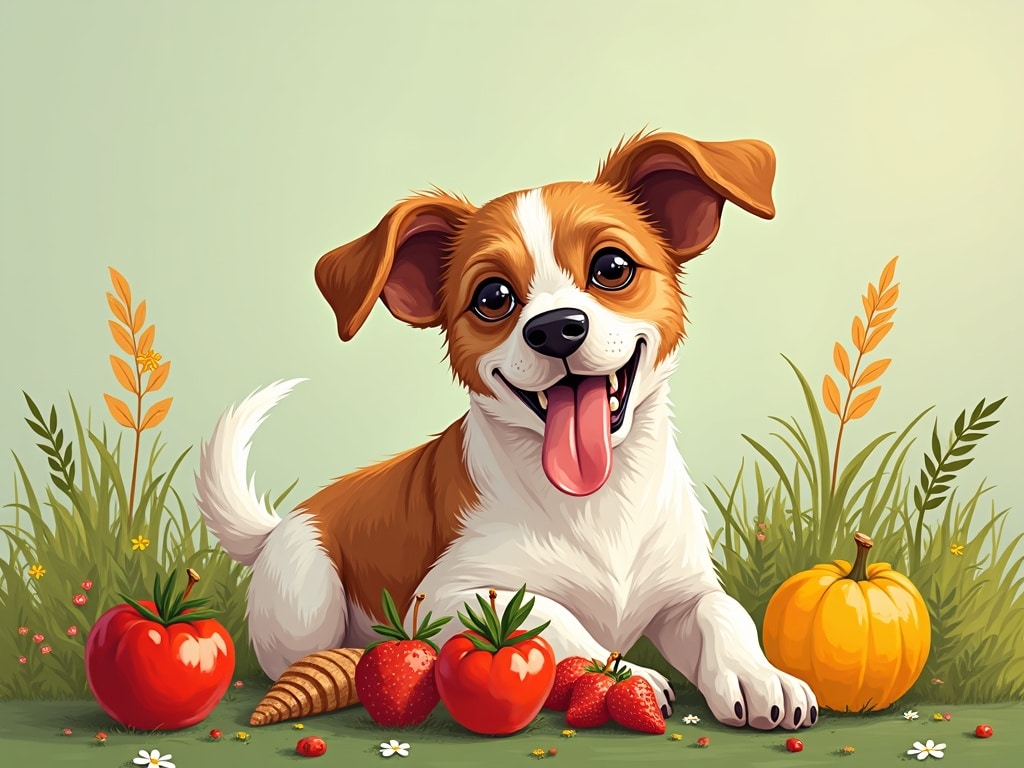How to Add More Fiber to Your Dog's Diet: A Comprehensive Guide
Is your dog experiencing digestive issues? Are they scooting across the carpet or having trouble with regular bowel movements? The answer might be simpler than you think: more fiber! Just like humans, dogs benefit greatly from a fiber-rich diet. This guide will walk you through everything you need to know about adding fiber to your dog’s diet, from understanding its benefits to choosing the right sources and incorporating them safely.
Why is Fiber Important for Dogs?
Fiber is often overlooked but plays a crucial role in your dog's overall health. It's a type of carbohydrate that the body can't digest, passing through the digestive system relatively unchanged. This undigested material offers a range of benefits, impacting everything from digestion to weight management.
Digestive Health
Regulates Bowel Movements: Fiber helps to normalize stool consistency, preventing both constipation and diarrhea. It adds bulk to the stool, making it easier to pass, while also absorbing excess water in cases of diarrhea.
Supports Gut Microbiome: Fiber acts as a prebiotic, feeding the beneficial bacteria in your dog's gut. A healthy gut microbiome is essential for proper digestion, nutrient absorption, and a strong immune system.
Reduces Colon Cancer Risk: Some studies suggest that a high-fiber diet may reduce the risk of colon cancer in dogs, although more research is needed in this area.
Weight Management
Promotes Satiety: Fiber-rich foods are more filling than low-fiber options, helping your dog feel fuller for longer and reducing the urge to overeat.
Low in Calories: Fiber itself contributes very few calories to the diet, making it a valuable tool for managing weight, especially in overweight or obese dogs.
Blood Sugar Control
Slows Glucose Absorption: Fiber slows down the absorption of glucose into the bloodstream, preventing spikes in blood sugar levels, which is particularly important for dogs with diabetes.
Other Benefits
Anal Gland Health: Adequate fiber can help keep anal glands expressed naturally, preventing impactions which can be a common and uncomfortable problem for some dogs.
May Reduce Cholesterol: While more research is needed, some studies suggest that fiber can help lower cholesterol levels in dogs.
Recognizing Fiber Deficiency in Dogs
Knowing the signs of fiber deficiency can help you address the issue promptly. Common symptoms include:
Constipation: Infrequent or difficult bowel movements.
Diarrhea: Loose or watery stools.
Scooting: Dragging their bottom across the floor, often indicating anal gland issues.
Excessive Gas: Increased flatulence.
Weight Gain: Due to feeling hungry more often and overeating.
Changes in Appetite: Either increased or decreased appetite.
If you notice any of these symptoms, it's essential to consult with your veterinarian to rule out other underlying health conditions. They can help determine if a fiber-rich diet is the right solution for your dog.
Best Fiber Sources for Dogs
Now that you understand the benefits of fiber, let's explore the best sources to add to your dog's diet. Remember to introduce new foods gradually to avoid digestive upset.
Pumpkin: A popular and effective source of fiber, pumpkin is also rich in vitamins and minerals. Use plain, unsweetened pumpkin puree (not pumpkin pie filling!).
Sweet Potato: Another excellent source of fiber, sweet potato is also packed with antioxidants and vitamins. Cooked and mashed sweet potato can be easily added to your dog's food.
Oats/Oatmeal: Cooked oatmeal is a gentle source of soluble fiber that can help regulate bowel movements. Make sure to use plain, unsweetened oatmeal.
Brown Rice: A good source of insoluble fiber, brown rice can add bulk to the stool and help with constipation. Cook it thoroughly before adding it to your dog's food.
Vegetables:
Carrots: Raw or cooked carrots are a good source of fiber and beta-carotene, which is important for vision.
Green Beans: A low-calorie, high-fiber option that many dogs enjoy. Offer them steamed or raw.
Broccoli: Contains fiber and antioxidants, but offer it in moderation as it can cause gas in some dogs. Cooked is preferable.
Fruits:
Apples: A good source of fiber and vitamins. Remove the core and seeds before offering them to your dog.
Bananas: High in potassium and fiber, but also contain sugar, so offer them in moderation.
Blueberries: Packed with antioxidants and fiber, blueberries are a healthy and tasty treat.
Psyllium Husk: A concentrated source of soluble fiber, often used as a supplement for digestive issues. It's important to use it with plenty of water to prevent constipation. Consult your vet before using psyllium husk.
Beets: Beets are a somewhat uncommon but fantastic source of fiber for dogs.
How to Safely Add Fiber to Your Dog's Diet
Introducing fiber into your dog's diet requires a gradual approach to avoid digestive upset. Here's a step-by-step guide:
1. Start Slowly: Begin with a small amount of the chosen fiber source. For example, start with a teaspoon of pumpkin puree for a small dog or a tablespoon for a larger dog.
2. Mix it In: Add the fiber source to your dog's regular food. Mixing it in helps them accept the new addition more readily.
3. Monitor Stool Quality: Keep a close eye on your dog's stool consistency. If you notice any signs of diarrhea, reduce the amount of fiber. If the stool remains hard and dry, you may need to increase the amount gradually.
4. Adjust Gradually: Increase the amount of fiber gradually over several days or weeks until you reach the desired effect.
5. Provide Plenty of Water: Fiber absorbs water, so it's crucial to ensure your dog has access to plenty of fresh water to prevent dehydration and constipation.
Recommended Fiber Dosage
There's no one-size-fits-all answer when it comes to fiber dosage. The ideal amount depends on your dog's size, breed, activity level, and individual needs. As a general guideline:
Small Dogs (under 20 lbs): Start with 1-2 teaspoons of pumpkin puree or a similar fiber source per day.
Medium Dogs (20-50 lbs): Start with 1-2 tablespoons of pumpkin puree per day.
Large Dogs (over 50 lbs): Start with 2-4 tablespoons of pumpkin puree per day.
These are just starting points. Adjust the dosage based on your dog's response and your veterinarian's recommendations.
Potential Risks and Considerations
While fiber is generally beneficial, it's important to be aware of potential risks and considerations:
Excessive Fiber: Too much fiber can lead to gas, bloating, and diarrhea. Start slowly and monitor your dog's stool quality.
Dehydration: Fiber absorbs water, so ensure your dog has access to plenty of fresh water to prevent dehydration.
Nutrient Absorption: Excessive fiber can interfere with the absorption of certain nutrients. Ensure the bulk of your dog's diet comes from a high-quality, balanced dog food.
Underlying Conditions: If your dog has any underlying health conditions, such as inflammatory bowel disease (IBD) or other digestive issues, consult your veterinarian before making significant changes to their diet.
Not a Cure-All: While fiber can help with certain digestive issues, it's not a cure-all. If your dog's symptoms persist, seek veterinary attention.
When to Consult Your Veterinarian
It's always a good idea to consult with your veterinarian before making significant changes to your dog's diet, especially if they have any existing health conditions. Seek veterinary attention if:
Your dog's symptoms don't improve after adding fiber to their diet.
Your dog experiences severe diarrhea, vomiting, or loss of appetite.
You notice blood in their stool.
Your dog is lethargic or showing other signs of illness.
The Bottom Line
Adding fiber to your dog's diet can be a simple and effective way to improve their digestive health, manage their weight, and support their overall well-being. By understanding the benefits of fiber, choosing the right sources, and introducing them gradually, you can help your furry friend live a happier and healthier life. Always remember to consult with your veterinarian for personalized recommendations and to address any underlying health concerns. A little extra fiber might be just what your dog needs to thrive!


